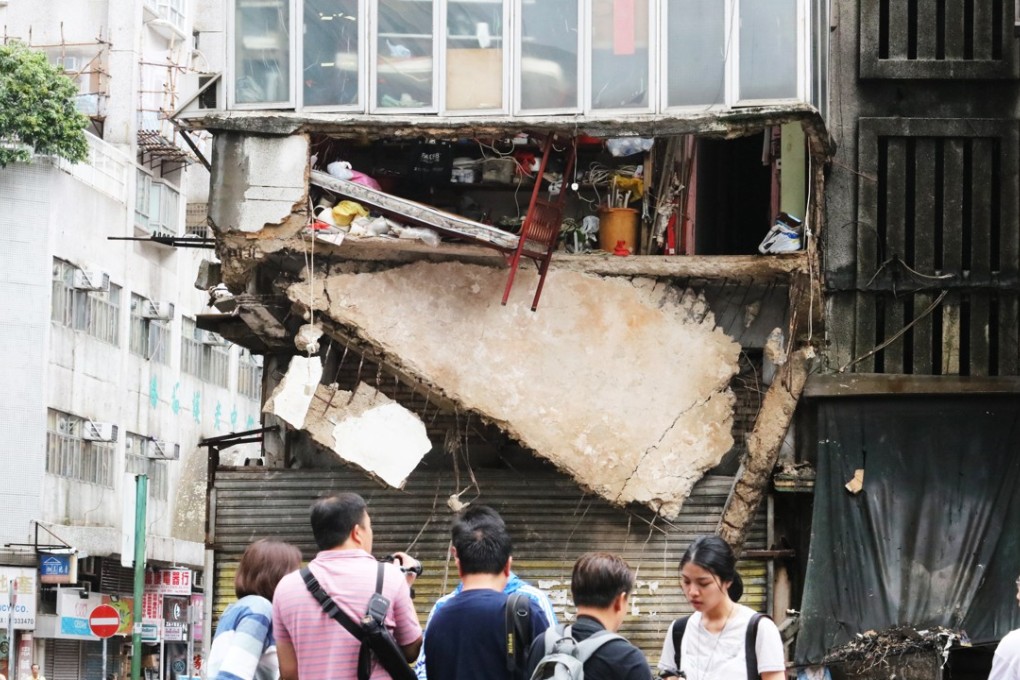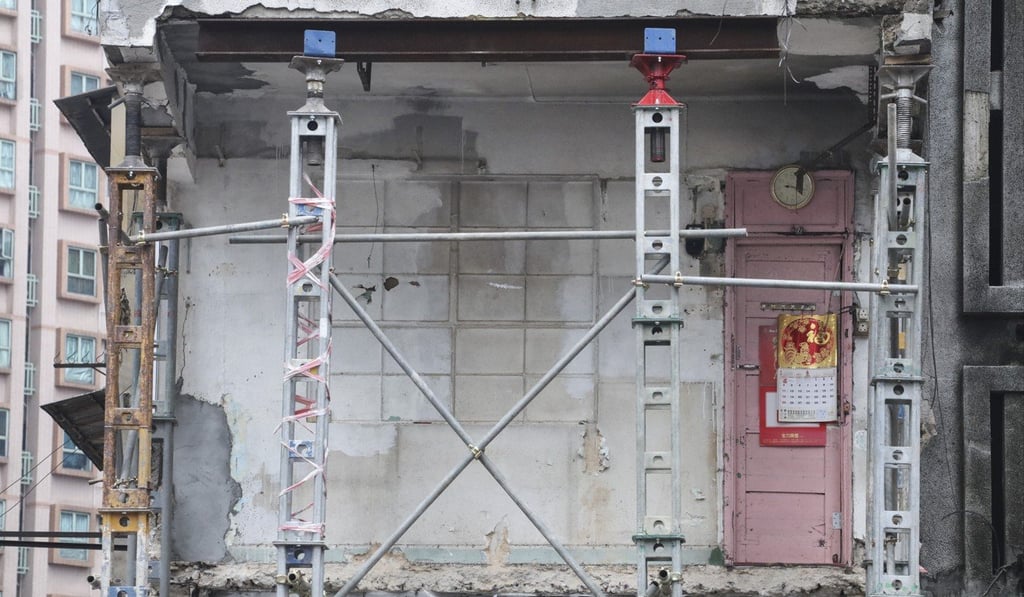Kowloon building collapse caused by subdivision work on balcony flat, report finds
Buildings Department may press charges if work found to have violated building regulations

Subdivision work that converted a balcony into a self-contained flat was one of the factors that triggered a partial collapse of a 61-year-old tenement block in Kowloon, according to an investigation by the Buildings Department.
The authority has not ruled out taking legal action if they find evidence that the conversions, which contributed to a 44 per cent increase in weight, violated building regulations.
No one was injured, but all of its residents – at least 22 of them – had to move out of the six-storey building due to structural safety concerns.

The collapse exposed the interior of the subdivided unit, with a bunk bed dangling precariously from the edge, while furniture and other household items were thrown onto the street.